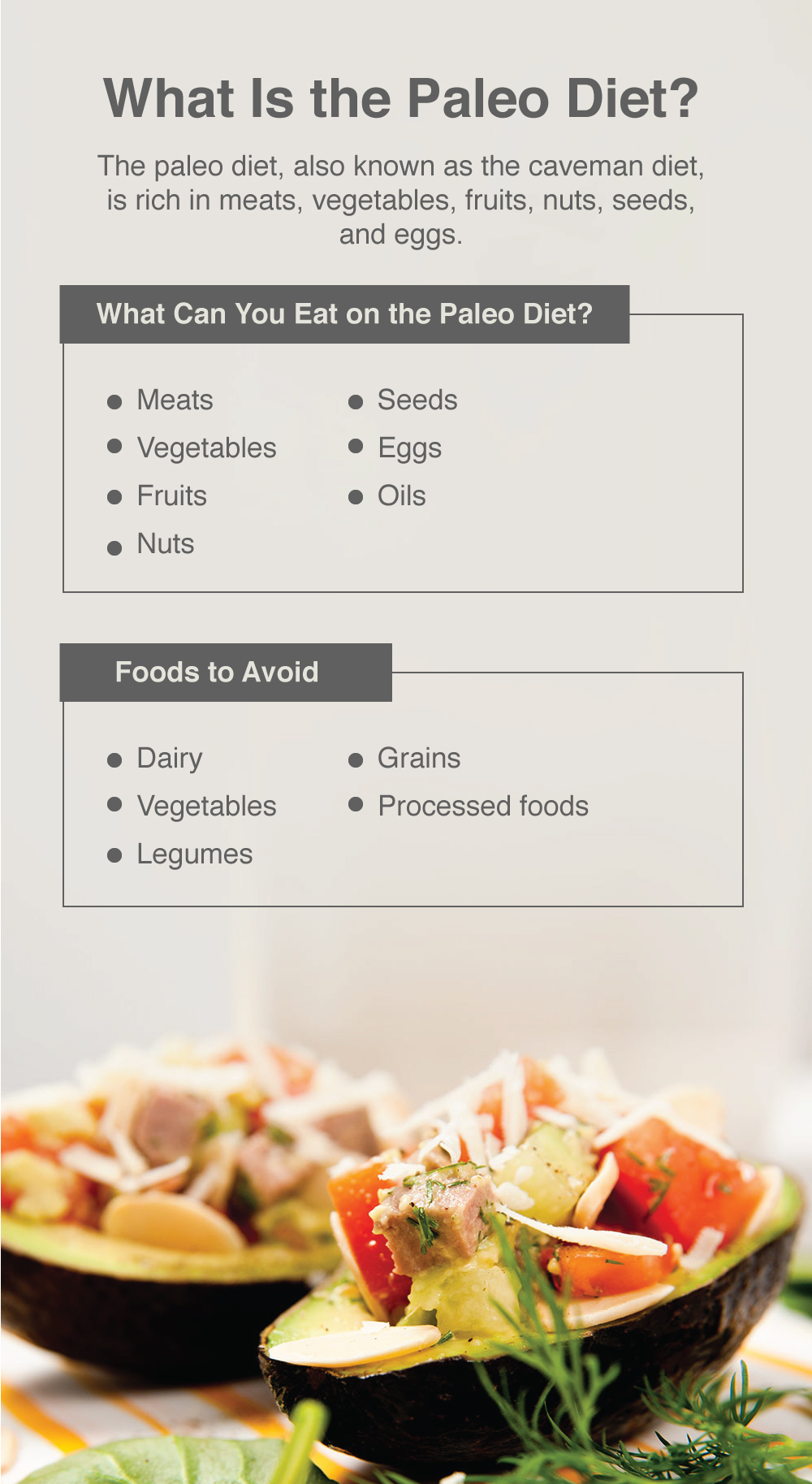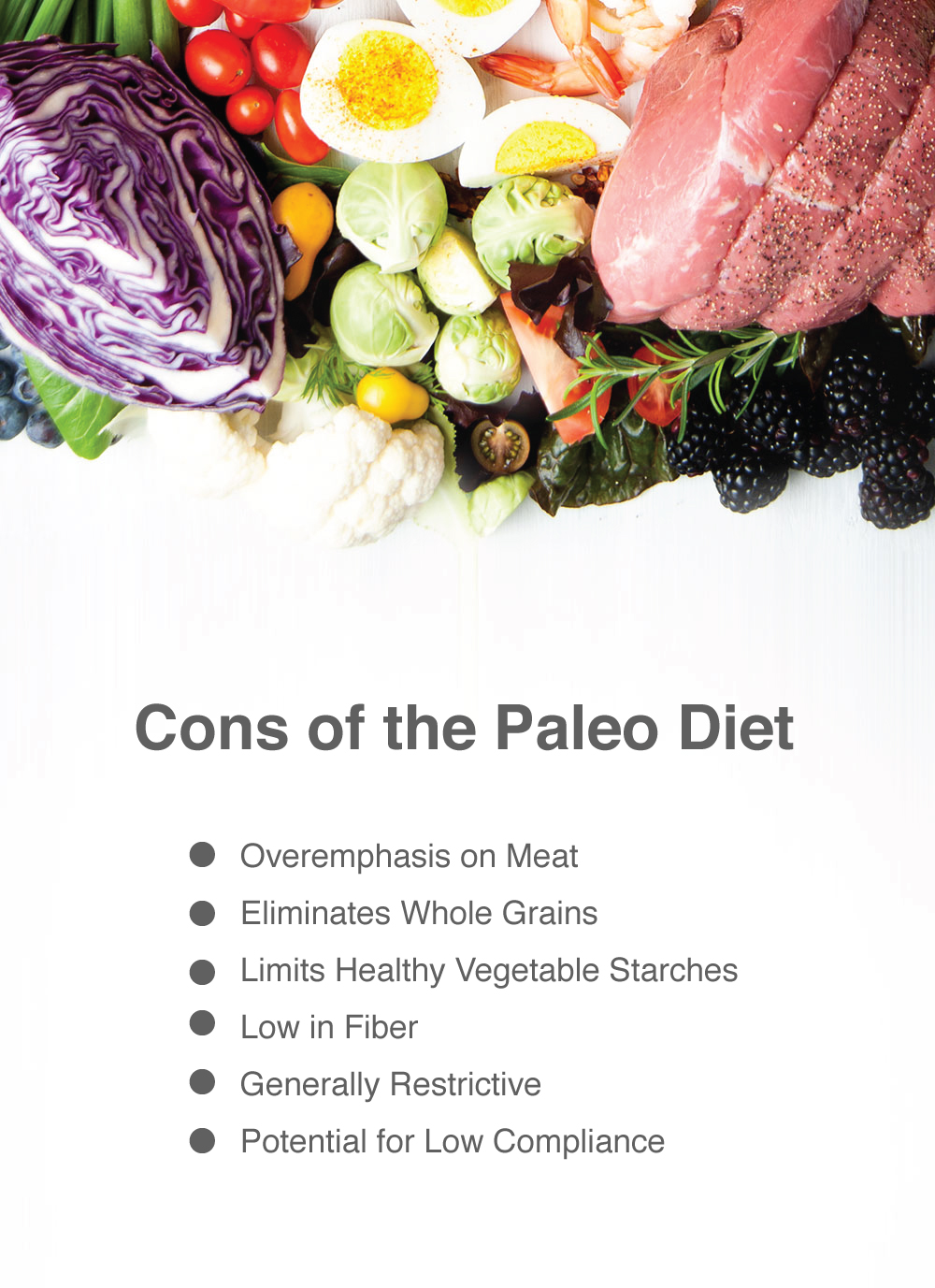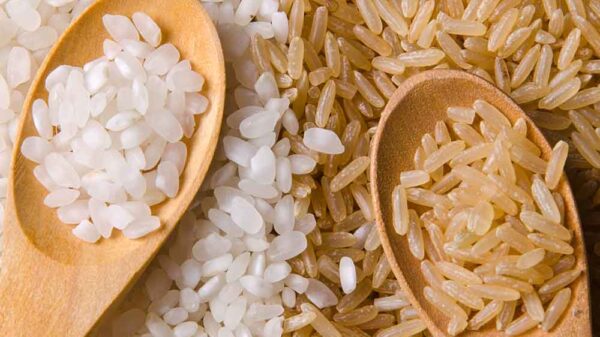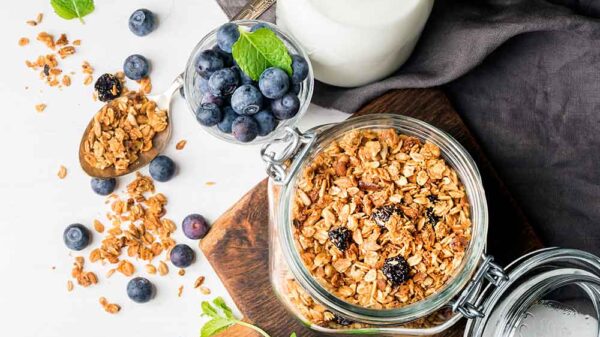With the plethora of marketed fad diets, it can be difficult to pick apart which ones are healthy and which ones aren’t. The paleo diet is one of these diets that has gained widespread popularity. So, is the paleo diet healthy, and can it help fatty liver disease? Let’s explore the paleo diet pros and cons and find out how you can make the paleo diet work for fatty liver disease.
What Is the Paleo Diet and How Did It Develop?
The paleo diet – also known as the caveman diet – developed based on what humans would’ve eaten during the Paleolithic era, which was a period of time in human history that lasted until about 12,000 years ago. During the Paleolithic era, humans utilized stone tools and cooked their food with fire. Paleolithic humans were mainly hunter-gatherers and relied on wild plants and meat from wild animals for sustenance.
During this time period, humans would not have been able to eat large quantities of grains and dairy. Consumption of grains and dairy began with the onset of the Neolithic era, during which domesticated animals and agriculture allowed humans to form settlements and farm livestock and crops as a constant food source.

What Can You Eat on the Paleo Diet?
The paleo diet is rich in meats, vegetables, fruits, nuts, seeds, and eggs. Though exact rules are variable, here are some of the foods that are generally encouraged when following the paleo diet.
- Meats: The paleo diet encourages the consumption of grass-fed beef, cage-free chicken, game, and wild-caught seafood. Examples of acceptable meats for the paleo diet include steak, chicken, turkey, pork, lamb, deer, duck, salmon, anchovies, mackerel, shrimp, oysters, and crab.
- Vegetables: The paleo diet is rich in vegetables like asparagus, kale, spinach, eggplant, peppers, broccoli, and cauliflower.
- Fruits: Paleo-friendly fruits include blueberries, raspberries, watermelon, apples, banana, oranges, grapes, and mango.
- Nuts: Paleo nuts include walnuts, almonds, cashews, and pecans.
- Seeds: Pumpkins seeds, sesame seeds, chia seeds, flaxseeds are paleo-approved seeds.
- Eggs: Cage-free eggs are included in the paleo diet.
- Oils: Healthy fats from certain oils like coconut oil, avocado oil, and olive oil are paleo-friendly. Ghee, a full-fat butter, is also a part of the paleo diet.
Foods to Avoid on the Paleo Diet
The paleo diet restricts dairy products, certain vegetables, legumes, certain oils, and processed foods. Here are examples of foods in each of these food groups that are not considered paleo. Keep in mind that these lists are not exhaustive, but simply serve to provide an idea of what foods the paleo diet suggests avoiding.
- Dairy: All dairy products, except for butter, are eliminated on the paleo diet plan. Dairy products to avoid include whole milk, skim milk, cream cheese, sour cream, mozzarella cheese, cheddar cheese, dairy-based spreads, yogurt, and ice cream.
- Vegetables: The paleo diet limits the consumption of certain starchy vegetables due to their high carbohydrate content. Starchy vegetables to limit or avoid include white potatoes, sweet potatoes, acorn squash, and beets.
- Legumes: Legumes are not part of a paleo-friendly diet, and include black beans, kidney beans, chickpeas, lima beans, lentils, soybeans, and soy products like tofu.
- Grains: Any grain or grain-based product is not a part of the paleo diet. Examples of grains to avoid include rice, quinoa, oats, millet, popcorn, bread, and pasta.
- Processed foods: The paleo diet discourages the consumption of processed foods, artificial preservatives, and added sugars. These products include granola bars, cereal, crackers, cakes, chips, cookies, candy, juice, and alcohol.
The Paleo Diet Is Controversial
Paleo proponents assert that the human digestive system isn’t designed to handle large quantities of dairy and grains, and the domestication of animals and crops is the root of non-communicable diseases like type 2 diabetes, insulin resistance, and high blood pressure.
Others argue that the diet’s premise is fundamentally flawed based on the fact that human digestive systems have likely evolved since the Paleolithic era. Paleolithic humans most likely had access to wild grains before the agricultural revolution.
Despite issues in the diet’s foundation, there are still pros and cons to the paleo diet.

Pros of the Paleo Diet
1. Focuses on Fresh Produce
The paleo diet emphasizes fresh fruits and vegetables, which have numerous benefits for metabolic syndrome and fatty liver disease. Fresh produce is filled with antioxidants, fiber, and vitamins. This aspect of the paleo diet may help reverse inflammation associated with fatty liver disease.
2. Includes Nuts and Seeds for Healthy Fat
Nuts and seeds are rich in monounsaturated and polyunsaturated fats. In contrast to saturated fats, monounsaturated and polyunsaturated fats promote heart health, lower systemic inflammation, and support healthy cholesterol levels.
3. Eliminates Added Sugar
Added sugar is a major contributor to metabolic syndrome and fatty liver disease. Added sugars have been isolated from their original source and added into processed foods. The paleo diet emphasizes the importance of clearing your diet of added sugar and processed foods, which in turn enhances insulin function, aids weight loss, and helps clear fat from the liver.
4. Eliminates Processed Foods
Cutting processed foods out of your diet is important for reversing fatty liver disease and promoting weight loss. Processed foods are filled with inflammatory agents like refined grains, which contribute to the deterioration of metabolic function and the accumulation of fat in the liver. Processed foods also include processed meats like pepperoni, sausage, burgers, bologna, spam, and salami. These meat products are high in saturated fat as well as sodium, which drives up blood pressure, puts pressure on the kidneys, and contributes to cardiovascular disease.
5. Provides High-Quality Protein
The paleo diet emphasizes fresh cuts of meat, all of which provide essential amino acids. Amino acids are the smallest useable units of protein, and the human body requires essential amino acids to synthesize muscle tissue and build other protein-based molecules. A balanced ratio of essential amino acids is also crucial for supporting liver health.
Meat is one of the highest-quality sources of amino acids, and a single meat product provides all essential amino acids needed for the body to carry out daily functions.
6. Cuts Out Dairy
By eliminating dairy, a significant source of dietary saturated fat is eliminated. Keeping saturated fat low helps prevent conditions associated with metabolic syndrome. Consuming dairy is also associated with higher levels of trimethylamine n-oxide, which is an indicator of inflammation.
7. Good for Gluten Sensitivities
Gluten is a protein found primarily in wheat products. Individuals with celiac disease or gluten sensitivities have adverse reactions to consuming foods containing gluten. Since it essentially cuts out all grains and grain products that could potentially contain gluten, the paleo diet is a great option for those with gluten intolerance.
Cons of the Paleo Diet
Despite the benefits of the paleo diet, there are also several disadvantages.
1. Overemphasis on Meat
Meat is one of the staple products of a paleo diet. Large portions of meat are acceptable on the paleo diet and this makes it possible to eat too much saturated fat.
Eating too much saturated fat over time contributes to high levels of low-density lipoprotein (the bad kind of cholesterol), increases the risk of plaques in the arteries, weakens the heart, and leads to stroke, heart attack, and cardiovascular disease. Increased intake of saturated fat also leads to weight gain and fat accumulation in the liber. Research shows that high intakes of saturated fat also worsens insulin sensitivity- a condition that is usually attributed mainly to high intake of refined sugars. (1)
Additionally, excess meat consumption can be difficult for your digestive system and kidneys to handle over time. The digestion of meat can also lead to the accumulation of undigested protein in the lower intestine that feeds harmful gut bacteria, which may have repercussions for gut and liver health. The kidney’s biological mechanisms are responsible for filtering acidic byproducts of meat consumption out of the blood, which exhausts the kidneys over time and may lead to a decline in function.
2. Eliminates Whole Grains
Eliminating all grain products misguidedly lumps whole grains into the same category as processed and refined grains. Your body processed the starches in whole grains much differently than the starches in processed and refined grains. While refined grains are immediately metabolized into glucose that spikes your blood sugar, whole grains are broken down slowly due to high fiber content. This allows for a controlled release of glucose into the blood that insulin can readily respond to, in order to deliver optimal levels of glucose to all of your cells.
There’s no sound evidence to suggest that eliminating whole grains from your diet will provide health benefits. In fact, regular consumption of whole grains is correlated with improved insulin sensitivity, improved cholesterol levels, and improved gut health. A study conducted by researchers at the Shaheed Beheshti University of Medical Sciences in Tehran, Iran, showed that the consumption of whole grains decreased the risk of metabolic syndrome. (2)
3. Limits Healthy Vegetable Starches
Putting a limit on vegetable starches like sweet potatoes, beets, and acorn squash suggests that these veggies are unhealthy simply due to their higher starch content. However, it’s important to point out that like whole grains and vegetable starches are paired with lots of fiber and antioxidants, which helps the body process carbohydrates for optimal energy utilization.
Sweet potatoes are high in fiber and beta carotene. Beets contain fiber, folate, magnesium, as well as nitrates that your body uses to make nitric oxide, which boosts blood flow and oxygenation. Cutting out sweet potatoes and beets simply because they contain natural starches also deprives you of their health-promoting benefits.
4. Low in Fiber
Though it’s possible to get lots of fiber from fruits and vegetables, the paleo diet also opens up the possibility of making meat the staple item of every meal. Meat contains essentially no fiber, impeding the ability of your digestive system to efficiently process foods.
5. Generally Restrictive
The paleo diet is restrictive because it cuts out large food groups like dairy and whole grains. This inhibits people doing paleo from gleaning the benefits that might come from nonfat dairy products and whole grains.
6. Potential for Low Compliance
A diet plan is usually made to be followed, and if a diet entirely cuts out certain products, it can be challenging to maintain the diet over a longer period of time. Never consuming a whole-grain is a difficult guideline to follow and may at times be impossible if you’re traveling. Not being able to follow a diet exactly can lead to feelings of failure, while not being allowed to have certain foods can contribute to feelings of deprivation. For example, a neighborhood barbeque might serve foods like roasted chicken, coleslaw, mac and cheese, and brown rice. Technically, the only paleo food item is roasted chicken. However, filling up only on chicken is unsatisfying and unhealthy. By forgoing the variety of sides you’re also forgoing vitamins, minerals, and fiber that could be obtained through other foods.
Is the Paleo Diet Healthy? This Is What the Research Says
Studies seem to have mixed results on whether the paleo diet is superior to other healthy diets when it comes to health outcomes.
A recent study published in the Journal of Clinical Medicine assessed the impact of the paleo diet on insulin sensitivity and blood sugar levels in comparison to other healthy diets, including the Mediterranean diet. (3) A meta-analysis of four studies revealed that the paleo diet did not significantly improve fasting blood sugar or insulin sensitivity, suggesting that paleo is not more effective for metabolic syndrome than other healthy diets. The study suggested that the paleo diet is effective for weight loss based primarily on the fact that it limits caloric intake. (3)
Another study published by researchers at Umea University, Uppsala University, University of Gothenburg, and Umea University Hospital in Sweden found that in comparison to a low-fat diet, the paleo diet resulted in a significantly greater reduction in liver fat content after 6 months. (4) Interestingly, however, insulin sensitivity on the paleo diet began to deteriorate after 6 months. (4)
Researchers at Brazilian universities conducted a meta-analysis of studies assessing the impact of the paleo diet on the risk of developing noncommunicable diseases. Results showed that the following the paleo diet is associated with weight loss and a lower BMI, though there is not sufficient evidence to suggest that the paleo diet has a beneficial impact on indicators of metabolic syndrome and fatty liver disease. (5)
Additionally, there is no scientific evidence to suggest that eliminating whole grains is beneficial for preventing disease. In fact, research suggests the exact opposite. Numerous studies suggest that whole grains like brown rice, quinoa, and oats are additive ingredients to a healthy diet. Whole grains have long been associated with heart health, and the high levels of fiber, prebiotics, protein, complex carbs, and antioxidants support gut health and help fight against metabolic syndrome.
How to Adapt the Paleo Diet to Fatty Liver
It is possible to adapt the paleo diet to fit a healthy diet plan for fatty liver disease. Stick with the liver-friendly paleo guidelines like eliminating processed foods and choosing natural, grass-fed meats.
By bending and adapting some of the other rules and allowing for some flexibility, the paleo diet can be a helpful guide for following a liver-friendly diet.
1. Go for Lean Cuts of Meat
When choosing your meats, make sure you pick the leanest cuts of meat possible. This means that for chicken or turkey, stick to the white breast meat and avoid the darker meat, which tends to be higher in fat. If you’re planning to have red meat, choose lean cuts of steak or lean ground beef.
Though fatty cuts of steak and dark meat chicken may be tender and succulent, they are higher in saturated fats than white meat. It’s better to save dark meat options for occasional treats.
2. Choose Fish Over Other Meats
Fish contains high-quality protein but without the high amounts of saturated fat in meats like steak and pork. Fish also contains the extra health-promoting benefits of healthy fats. Fish like salmon, mackerel, and sardines contain lots of polyunsaturated fat in the form of omega-3 fatty acids. Substituting polyunsaturated fats for saturated fats has been shown to improve metabolic health and reduce liver damage associated with cirrhosis. Omega-3 fatty acids soothe systemic inflammation and promote the healthy functioning of all organ systems.
3. Eat Natural Digestive Enzymes
Since the paleo diet includes meat as a staple item, making sure your gut is fully equipped to break down protein is important for maximum protein utilization. Animal protein is the toughest nutrient for the body to metabolize and requires many hours to pass through the stomach and digestive system before its ready for use.
Natural digestive enzymes are found in fruit, particularly kiwi, papaya, and pineapple. The enzyme actinidin is found in kiwi, papain is found in papaya, and bromelain is found in pineapple. These enzymes exhibit proteolytic activity, which means they break protein down into its smallest useable units called amino acids.
4. Emphasize Plants on Your Plate
When creating your mealtime plate, make sure the majority of the plate is comprised of fruits, veggies, and nuts. This will ensure that you’re getting adequate amounts of plant foods to supply necessary fiber and antioxidants. Plus, try having one meal each day that is only based on plants. This will help you consume more fruits and veggies and load up on fiber while giving your gut and kidneys a break from constantly metabolizing and processing animal protein.
5. Eat Whole Grains Sometimes
Just because your diet is paleo doesn’t mean you have to completely abandon certain food groups. Some moderation is important for rounding out your diet and gleaning the benefits that whole grains have to offer. This may mean eating a small bowl of oatmeal in the morning along with your eggs or having a scoop of brown rice with your meat and veggies at dinner.
6. Don’t Try to Make the Paleo Diet Completely Vegetarian
Should you follow a vegetarian paleo diet? Probably not, because this diet would be even more restrictive than the paleo diet alone. If the paleo diet were adapted to fit a vegetarian lifestyle, this would mean that meat, dairy, eggs, and whole grains would be off-limits. Vegetables, fruits, nuts, seeds, and beans would be the only viable food sources, which greatly limits excellent sources of nutrients.
Realistically, a completely vegetarian version of the paleo diet is probably unrealistic. If you want to follow a vegetarian meal plan, incorporate starchy vegetables, whole grains, and low-fat dairy products for a more balanced diet.
Paleo Meal Ideas for Fatty Liver Disease
Here is a sample meal plan for a day of paleo meals. The meals are adapted from a foundation of paleo foods but have been tweaked to promote optimal liver health.
Breakfast
Try making egg white oats for a protein-filled breakfast that powers you through the morning. Prepare by cooking 1/3 cup of oats in the microwave. Add egg white and stir periodically until the egg whites are completely cooked. Mix in a tablespoon of flaxseeds and top with coconut sugar, blackberries, blueberries, and any other fruit of your choice. Though the oats are a non-paleo addition, the rest of the ingredients are paleo-friendly.
Lunch
This meal can follow paleo guidelines. Create a salad of chopped kale, red cabbage, peppers, and broccoli. Sprinkle with walnuts and top with grilled chicken and olive oil-based dressing. As a vegetarian alternative, forgo the grilled chicken and add extra walnuts, pumpkin seeds, and sliced avocado.
Dinner
For dinner, oven-baked salmon, grilled asparagus, and baked sweet potato combine to create a perfect, nutrient-packed meal. Top the salmon with a tropical salsa including mango, papaya, pineapple, and red pepper for extra digestive enzymes. Every part of this meal is paleo-friendly, aside from the sweet potato.
Snack
Apples and almond butter combine to make a tasty, nutritious snack to tie you over between meals.
Conclusion
Strictly following the paleo diet may lead to suboptimal levels of certain nutrients like high intake of saturated fat, low fiber, and inadequate carbohydrates. At the same time, many premises of the paleo diet are health-promoting, such as eliminating processed foods, focusing on produce, and consuming healthy fats and protein. Using paleo as a guide and making small changes to incorporate healthy starches and minimize saturated fat helps reverse fatty liver disease.
References:
(1) https://www.ncbi.nlm.nih.gov/pubmed/15297079
(2) https://www.ncbi.nlm.nih.gov/pubmed/15536473
(3) https://www.ncbi.nlm.nih.gov/pubmed/31973038























